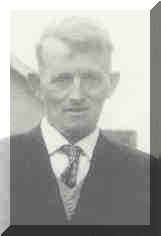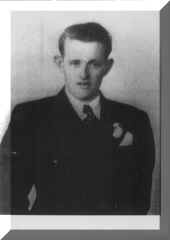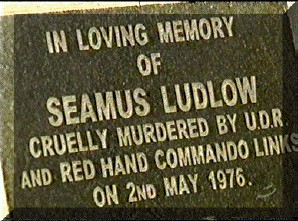The Murder of Seamus Ludlow in County Louth, May 1976. Towards a public inquiry?



The Murder of Seamus Ludlow in County Louth, May 1976. Towards a public inquiry?
|
|
Introduction to the murder of Seamus Ludlow and the official cover-up. Michael Cunningham investigation - 1978 The recent Campaign for Truth and Justice. Irish Victims Commission Report. Ludlow family's questions for the RUC (now the PSNI). Jim J. Kane's letter to the N I Human Rights Commission. Jim J. Kane's letter to the RUC Ludlow Family Letter to Bertie Ahern Other Ludlow Family Sites. |
The Examiner, 23 February 1999: Family calls for public inquiry into killing The family of murdered County Louth man Seamus Ludlow last week repeated their call for an independent public inquiry to be held into his killing over 20 years ago and revealed they are considering taking legal action against the officers involved in the investigation. No-one has ever been charged with the murder of the 47-year-old forestry worker in May 1976. It is now widely believed that loyalists were behind his death but that a cover-up was mounted for two decades by authorities north and south of the border by members of the security forces and one of their agents. Mr Ludlow was last seen hitching a lift around midnight on May 1st 1976 after leaving the Lisdoo Arms in Dundalk. His body was found the following day, dumped in a lane at Culfore just half a mile from his home. He had been shot at point blank range three times in the chest. Human rights organization British Irish Rights Watch is supporting the calls for a public inquiry and, in a detailed report published last week, has also demanded answers to a number of questions about the murder. These include why the initial Garda investigation stopped suddenly after three weeks, why the family were excluded from the inquest and exactly what information the Gardai held about the murder and for how long. At a press conference in Dublin on Thursday, Mr Ludlow's nephew Jimmy Sharkey accused the Gardai of suppressing evidence in the case. On the same day a public meeting was held in Dundalk attended by by several hundred people and local representatives. A petition in support of an inquiry was also gathered. Mr Sharkey stated: "As far back as 1979 the guards could have acted on the evidence they had. It was very strong evidence." The family wanted to know the reason for the cover-up, he said, adding "I think it is that one of the four people in the car that night was an agent or informer for British Military Intelligence, the RUC Special Branch, or even Garda Special Branch. Everything points to the trigger man and if that is true it means he was allowed to continue on with his murderous activities." He added that he wanted his uncle's killers to serve a long jail sentence. For years Gardai had told the family they believed Mr Ludlow was murdered by the IRA, a claim the republican organization has always denied. In late 1997 however Mr Ludlow's relatives were told that the authorities had probably known the identities of the real killers as long before as 1979. The investigation was reopened and last February four men were arrested by the RUC and questioned in Belfast for six days. They were all released without charge and a file sent to the DPP in the North for consideration. One of those questioned about the case later claimed in a Sunday Tribune interview that the three men actually involved in the murder had included two serving UDR officers who were also members of the Red Hand Commandos. Mr Ludlow's killer, it was alleged, had been involved in a string of other murders carried out by the paramilitary group. The man also revealed that he was interviewed by RUC Special Branch in 1987 but that they already appeared to know the details of the murder. A decision on whether or not to prosecute has still not been made by the DPP in Northern Ireland.
I Homepage I I Top I I Press Coverage I |